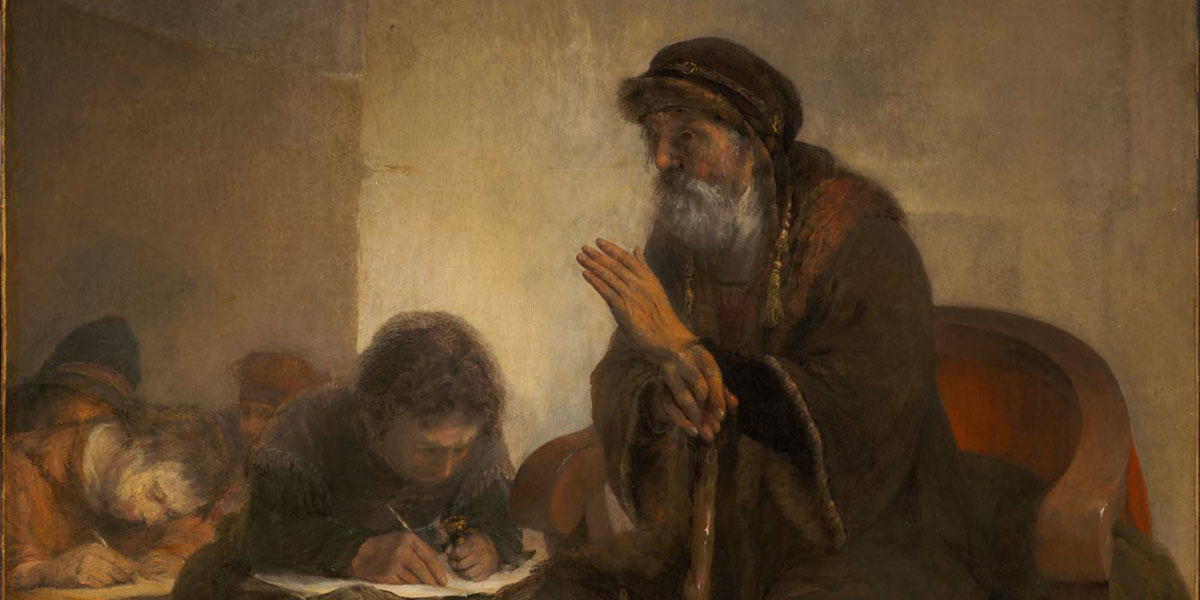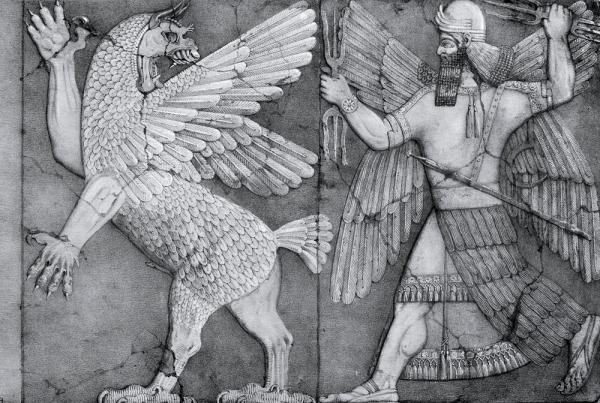
The Know
Sometimes, when reading the Book of Mormon, we find examples of things that exist in later Jewish sources, but that we have no evidence of from Book of Mormon times. 3 Nephi 4 records that the robber Zemnarihah was hanged, and that the tree he was hanged on was cut down.1 This is similar to Rabbinic teaching written years after Lehi left Jerusalem.2 As another example, a Jewish book from around the time of Jesus known as Biblical Antiquities, written by an unknown author called Pseudo-Philo, contains material that is very similar to Jacob 4–6.3
Such findings pose an interesting question: How could there be so many legal and literary similarities between details found in the Book of Mormon and texts written so many years after Lehi left Jerusalem?4
One possible answer to this question is that these early Jewish texts may well preserve details from hundreds, if not thousands, of years before they were written.5 The works of a Rabbi known as Rav from the third century A.D. is a good example of this. In his writings, Rav analyzed a verse which reads, “By his power he stilled the Sea; by his understanding he struck down Rahab” (Job 26:12, NRSV). This is generally understood to be a reference to the ancient image of God waging war against a cosmic monster that was thought to live in the sea.6 This idea is preserved in other parts of the Old Testament (see Isaiah 27:1), so, one might have expected that Rav would turn to another Old Testament verse to explain this passage.7 Instead, he turned to an ancient Near Eastern text from more than 1400 years before his own time.
In that case, at a site called Ugarit, north of Israel, archaeologists discovered in the 1930s a document from roughly 1200 BC, describing this cosmic monster.8 This text refers to the monster as the “Prince of the Sea,” a phrase that only appears in this text and not in the Old Testament.9 Surprisingly, this is the exact phrase that Rav used to describe the monster. In Rav’s commentary, God spoke to the “Prince of the Sea,” and gave him an order.10 When he refused, “God trampled on him and killed him, as it is said, ‘By his power he beat down the sea, and by His understanding He smote Rahab.’”11 This is one intriguing example of a rabbinic Jewish source preserving things from centuries before its own time.
A bas-relief thought to be of Marduk and Tiamat from a temple at Nimrud dates the legend to at least the reign of Ashurnasirpal II (883-859 BC). Image via Wikimedia Commons
Another example of this comes from a rabbinic commentary on Job 9, written in the land of Israel in Roman times. Job 9:8 states that God “spreadeth out the heavens, and treadeth upon the waves of the sea.” The Rabbis commenting on this biblical verse connected it to an ancient Babylonian text known as the Enuma Elish.12 In this text, the God Marduk killed the sea-monster Tiamat and created the world’s oceans from her body.13
The Rabbis who commented on the verse in Job described treading on the waves of the sea using a word that is never used in biblical texts to describe this event.14 However, almost exactly the same word appears in the Enuma Elish to describe the killing of Tiamat.15 This rabbinic text reads, “What did God do? He trampled the water, and walked on it … as it is said, ‘He walked on the back of the sea’.”16
The Why
Ultimately, we cannot always know why or how some similarities exist between the Book of Mormon and ancient Jewish texts written after Lehi’s time. Some of these similarities may simply stem from two groups of people independently interpreting passages from the Old Testament in similar ways. However, the specific examples discussed above present several other possible explanations. In at least some cases, the Rabbis and other ancient Jewish authors may have preserved, through their oral laws, various expressions and practices that go back to times well before the life of Lehi. These things may have been preserved from that common cultural source also by the Nephites. Legal systems and norms were remarkably stable in the ancient Near East, and numerous practices were in fact handed down from generation to generation.
Indeed, changing the law in ancient societies was relatively rare. They had high respect for their laws (see Psalm 19:7-9). Among the Nephites, amending the law was even discouraged as a form of possible “wickedness” (see Mosiah 29:23). And since the Nephites aimed to obey the law strictly (2 Nephi 5:10; Jarom 1:5; Alma 30:2-3), they would have been careful to follow important practices of their inherited laws. These perspectives go a fair distance toward explaining why, not just a few, but many practices of the Nephites find counterparts in Talmudic provisions.17
These attitudes are instructive for us today. Any society based on the rule of law needs to encourage respect for established precedents and honorable officials. Such respect is nurtured by honoring, preserving, and sustaining the law. Just as the ancients preserved texts and traditions over the centuries, we are reminded of the importance of preserving honorable traditions today. The Church of Jesus Christ of Latter-day Saints has taken great care to keep and preserve records for future generations, often at great expense and sacrifice,18 and as commanded by scripture: “A record shall be kept” (D&C 21:1). Such efforts remind us of how important fundamental continuity is the Church.
The same can be said on a personal and family level as well. The people who preserved stories and ideas in ancient times did not know whom they would be benefitting, or in what way. However, the effort they spent in preserving these things proved to be useful to generations yet unborn. Our efforts to keep records by keeping personal journals and writing family histories may also prove to be important to our descendants many years in the future,19 preserving the blessings of liberty not only to ourselves but also to our posterity.20
Further Reading
Daniel Belnap, “’I Will Contend with Them That Contendeth with Thee’: The Divine Warrior in Jacob’s Speech of 2 Nephi 6–10,” Journal of the Book of Mormon and Restoration Scripture 17, no. 1–2 (2008): 20–39.
John W. Welch, “The Last Words of Cenez and the Book of Mormon,” in The Allegory of the Olive Tree: The Olive, the Bible, and Jacob 5, ed. Stephen D. Ricks and John W. Welch (Salt Lake City and Provo, UT: Deseret Book and FARMS, 1994), 305—321.
John W. Welch, “The Execution of Zemnarihah,” in Reexploring the Book of Mormon: A Decade of New Research, ed. John W. Welch (Salt Lake City and Provo, UT: Deseret Book and FARMS, 1992), 250–252.
- 1. For more on this, see John W. Welch, “The Execution of Zemnarihah,” in Reexploring the Book of Mormon: A Decade of New Research, ed. John W. Welch (Salt Lake City and Provo, UT: Deseret Book and FARMS, 1992), 250–252.
- 2. See Book of Mormon Central, “Why Did the People Cut Down the Tree after Hanging Zemnarihah? (3 Nephi 4:28),” KnoWhy 67 (March 31, 2016).
- 3. See Book of Mormon Central, “Is Anything Known of the Prophet Zenos Outside of the Book of Mormon? (Jacob 5:1),” KnoWhy 67 (March 31, 2016).
- 4. For other examples, see Book of Mormon Central, “Why Did Moroni Refer to Vessel Impurity in Condemning the Central Government? (Alma 60:23),” KnoWhy 169 (August 19, 2016); Book of Mormon Central, “Did Alma Counsel His Sons During the Passover? (Alma 38:5),” KnoWhy 146 (July 19, 2016).
- 5. For more on similarities between Rabbinic texts and interpretations and the Book of Mormon, see Bradley J. Kramer, Beholding the Tree of Life: A Rabbinic Approach to the Book of Mormon (Salt Lake City, UT: Greg Kofford Books, 2014), xi–xix. On the question of the relevancy of later Jewish provisions to the understanding of biblical laws or passages in the Book of Mormon, see John W. Welch, The Legal Cases in the Book of Mormon (Provo: Brigham Young University Press, 2008), 32-33. For discussions by Jewish scholars of connections between rabbinic law to ancient Near Eastern and Biblical law, see Reuven Yaron, “Biblical Law: Prolegomena,” in Jewish Law in Legal History and the Modern World, ed. B. Jackson (Leiden: Brill, 1980), 27-44; Alexander Rofe, “Methodological Aspects of the Study of Biblical Law,” in Jewish Law Association Studies 2 (1968): 13-16.
- 6. For more on this, see Daniel Belnap, “’I Will Contend with Them That Contendeth with Thee’: The Divine Warrior in Jacob’s Speech of 2 Nephi 6–10,” Journal of the Book of Mormon and Restoration Scripture 17, no. 1–2 (2008): 20–39.
- 7. See Book of Mormon Central, “Why Does Jacob Choose a ‘Monster’ as a Symbol for Death and Hell? (2 Nephi 9:10),” KnoWhy 34 (February 16, 2016).
- 8. Irving Jacobs, The Midrashic Process: Tradition and Interpretation in Rabbinic Judaism, (Cambridge: Cambridge University Press, 1995), 155.
- 9. Jacobs, The Midrashic Process, 155.
- 10. Jacobs, The Midrashic Process, 155.
- 11. Jacobs, The Midrashic Process, 155.
- 12. Jacobs, The Midrashic Process, 156.
- 13. Jacobs, The Midrashic Process, 156.
- 14. Jacobs, The Midrashic Process, 156.
- 15. Jacobs, The Midrashic Process, 156.
- 16. Jacobs, The Midrashic Process, 156.
- 17. For a list of references to sixteen rabbinic conventions found in the Book of Mormon, including practices regarding burial, courts, punishments, ostracism, ban, perjury, witnesses, etc., see Welch, Legal Cases in the Book of Mormon, 492.
- 18. See, for example, the Granite Mountain Records Vault was carved out of solid rock as a way of preserving important genealogical and church records for future generations. See, The Church of Jesus Christ of Latter-day Saints, “Granite Mountain Records Vault,” online at mormonnewsroom.org.
- 19. See Book of Mormon Central, “Why Is It Important to Keep Records? (1 Nephi 9:5),” KnoWhy 345 (July 28, 2017).
- 20. Preamble to the United States Constitution.
Continue reading at the original source →




